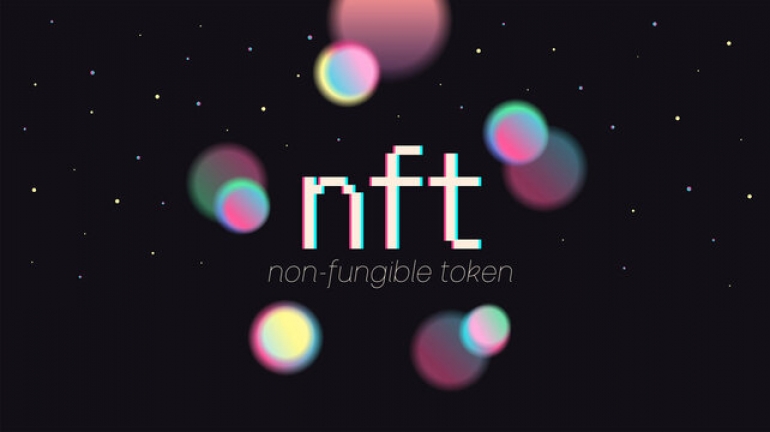The world of blockchain technology has witnessed a groundbreaking transformation with the advent of Non-Fungible Tokens (NFTs). NFTs have disrupted traditional notions of ownership and revolutionized various industries, including art, gaming, music, and collectibles. As the demand for NFTs continues to soar, entrepreneurs and businesses are eager to explore the immense potential of NFT project development. In this blog, we will dive into the intricacies of NFT project development, exploring the key steps, benefits, challenges, and the future of this digital revolution.
Understanding NFT Project Development
NFT project development involves the creation of unique digital assets as Non-Fungible Tokens on blockchain networks. Unlike cryptocurrencies, NFTs are indivisible and represent ownership of specific items, content, or intellectual property. Developing an NFT project entails several key steps:
Conceptualization: The first step is to define the vision and purpose of the NFT project. Whether it's empowering artists, creators, or tokenizing real-world assets, a clear concept serves as the foundation for successful development.
Platform Selection: Choosing the right blockchain platform is crucial. Ethereum is a popular choice due to its robust infrastructure, but other platforms like Binance Smart Chain, Flow, and Tezos also support NFT development.
Smart Contract Creation: Smart contracts are at the core of NFT project development. They define the properties, metadata, ownership, and transaction rules for NFTs, ensuring transparency and security on the blockchain.
Token Minting: Once the smart contract is ready, NFTs can be minted, giving them a unique identity on the blockchain. Creators can tokenize their digital content, such as artworks, music, or in-game assets, and create NFTs ready for sale or auction.
Security Auditing: Thorough security auditing is crucial to identify and rectify potential vulnerabilities in the smart contract. Audits ensure the project is robust, reducing the risk of exploits or hacks.
User Interface and Experience: A user-friendly interface is essential to attract creators and collectors to the platform. The design should be intuitive, making it easy for users to mint, buy, sell, and manage their NFTs.
Community Building: Building a vibrant and engaged community around the NFT project is vital for its success. Engaging with creators, collectors, and influencers helps generate interest and fosters growth.
Benefits of NFT Project Development
Empowering Creators: NFTs provide artists, musicians, and creators with a direct path to monetize their digital content. They gain control over their work, receive royalties on secondary sales, and establish deeper connections with their audience.
Provable Ownership: NFTs use blockchain technology to establish immutable ownership records. This ensures authenticity and uniqueness, preventing unauthorized duplication or alteration of digital assets.
Access to Global Markets: NFTs are borderless, allowing creators to reach a global audience without the need for intermediaries. This democratization of access opens up new markets and opportunities.
New Revenue Streams: NFT project development creates innovative revenue streams for businesses. Apart from primary sales, secondary market transactions generate ongoing revenue through royalties.
Collectibles and Gaming: NFTs have transformed the collectibles and gaming industries. Gamers can own and trade in-game assets, while collectors can acquire rare and valuable digital collectibles.
Challenges in NFT Project Development
High Gas Fees: Ethereum, the most popular blockchain for NFTs, has faced scalability issues and high gas fees during periods of high activity. This can impact the cost and speed of NFT transactions.
Environmental Concerns: The energy-intensive mining process used in some blockchain networks has raised environmental concerns. Projects are exploring eco-friendly alternatives to address these issues.
Market Saturation: The growing popularity of NFTs has led to a crowded marketplace, making it challenging for new projects to stand out. Unique concepts, strong community engagement, and targeted marketing are essential to overcome this challenge.
Intellectual Property Issues: Tokenizing copyrighted materials without proper authorization can lead to legal challenges and copyright infringement claims. It is vital to obtain the necessary permissions before tokenizing existing works.
The Future of NFT Project Development
As technology evolves and blockchain scalability improves, NFT project development will continue to thrive. Innovations such as Layer-2 solutions and interoperability protocols are expected to address current challenges and enhance the NFT ecosystem. NFT marketplaces will diversify, catering to niche industries and offering a wide range of digital assets. NFT projects will become more sustainable and eco-friendly, aligning with global environmental initiatives. Additionally, the integration of virtual reality and augmented reality will further enhance the NFT experience, creating immersive and interactive digital worlds for users.
Conclusion
NFT project development has emerged as a game-changer, transforming the way we perceive and engage with digital assets. The rise of NFTs has unlocked new possibilities for creators, collectors, and businesses, disrupting traditional industries and paving the way for a more inclusive and decentralized future. As the NFT space evolves, staying innovative, environmentally conscious, and community-oriented will be crucial for successful NFT projects. Embrace the digital revolution of NFTs and embark on a journey of creativity, ownership, and connectivity with NFT project development.





Comments